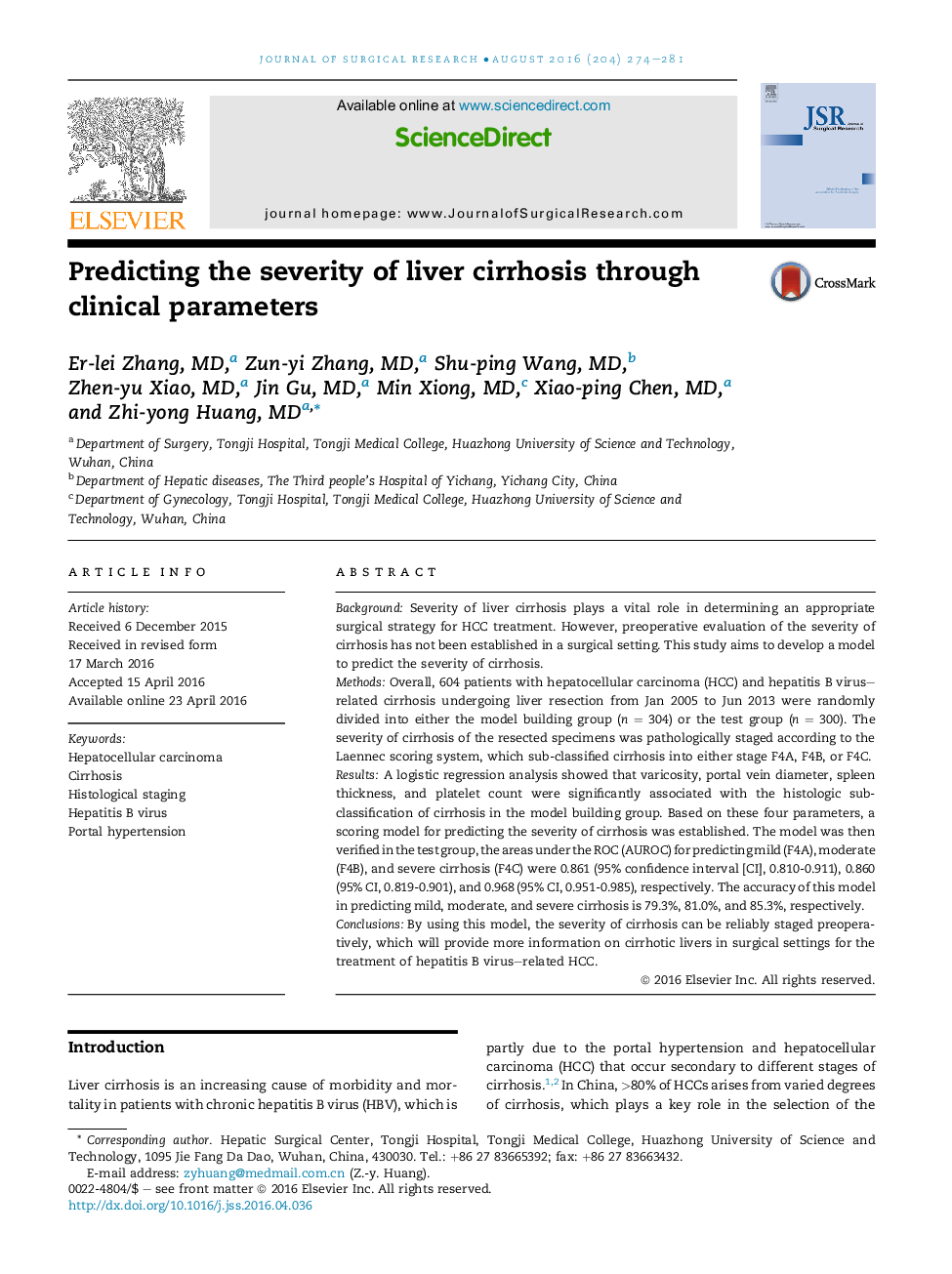| Article ID | Journal | Published Year | Pages | File Type |
|---|---|---|---|---|
| 4299109 | Journal of Surgical Research | 2016 | 8 Pages |
BackgroundSeverity of liver cirrhosis plays a vital role in determining an appropriate surgical strategy for HCC treatment. However, preoperative evaluation of the severity of cirrhosis has not been established in a surgical setting. This study aims to develop a model to predict the severity of cirrhosis.MethodsOverall, 604 patients with hepatocellular carcinoma (HCC) and hepatitis B virus–related cirrhosis undergoing liver resection from Jan 2005 to Jun 2013 were randomly divided into either the model building group (n = 304) or the test group (n = 300). The severity of cirrhosis of the resected specimens was pathologically staged according to the Laennec scoring system, which sub-classified cirrhosis into either stage F4A, F4B, or F4C.ResultsA logistic regression analysis showed that varicosity, portal vein diameter, spleen thickness, and platelet count were significantly associated with the histologic sub-classification of cirrhosis in the model building group. Based on these four parameters, a scoring model for predicting the severity of cirrhosis was established. The model was then verified in the test group, the areas under the ROC (AUROC) for predicting mild (F4A), moderate (F4B), and severe cirrhosis (F4C) were 0.861 (95% confidence interval [CI], 0.810-0.911), 0.860 (95% CI, 0.819-0.901), and 0.968 (95% CI, 0.951-0.985), respectively. The accuracy of this model in predicting mild, moderate, and severe cirrhosis is 79.3%, 81.0%, and 85.3%, respectively.ConclusionsBy using this model, the severity of cirrhosis can be reliably staged preoperatively, which will provide more information on cirrhotic livers in surgical settings for the treatment of hepatitis B virus–related HCC.
